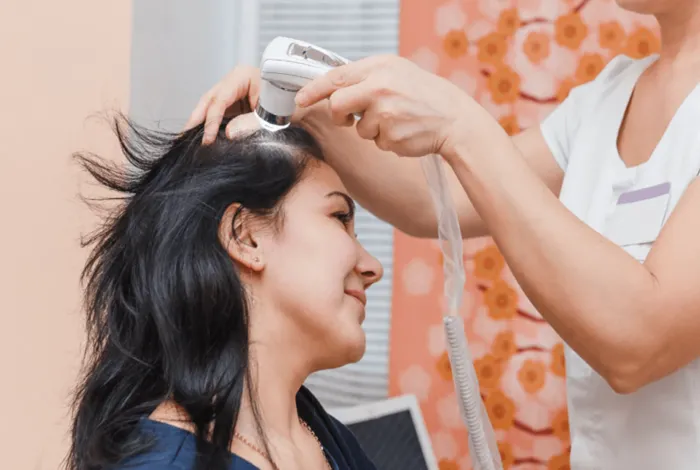Hair loss can be a distressing experience, affecting self-esteem and confidence. Fortunately, hair implant procedures offer a reliable solution for restoring hair and achieving a fuller, natural-looking head of hair. But how exactly do they perform hair implants?
In this article, we will explore the step-by-step process of hair implantation, the different techniques used, and what you can expect before, during, and after the procedure. By the end of this article, you will have a clear understanding of how hair implants work and how they can help you regain your hair and confidence.
What Are Hair Implants?
Hair implants, also known as hair transplants, are surgical procedures that involve moving hair follicles from a donor area (usually the back or sides of the scalp) to a recipient area (the thinning or balding area). The goal is to restore hair growth in areas where hair has been lost or thinned out. The success of a hair implant depends on several factors, including the skill of the surgeon, the quality of the donor hair, and the chosen method.
The Hair Implant Process
The hair implant process involves several steps, from the initial consultation to the post-operative care. Here is a detailed breakdown of each step:
Initial Consultation
The first step in the hair implant process is the initial consultation with a hair transplant specialist. During this consultation, the surgeon will:
Evaluate Your Hair Loss: The surgeon will assess the extent of your hair loss, the quality of your donor hair, and the areas that need to be treated.
Discuss Your Goals: You will discuss your hair restoration goals and expectations with the surgeon.
Medical History: The surgeon will review your medical history, including any underlying health conditions, medications, and previous surgeries.
Physical Examination: A thorough examination of your scalp and hair will be conducted to determine the best treatment approach.
Recommend a Method: Based on the evaluation, the surgeon will recommend the most suitable hair implant method (FUT, FUE, DHI, etc.).
Discuss Risks and Benefits: The surgeon will explain the risks, benefits, and potential outcomes of the procedure.
Cost and Financing: The cost of the procedure and available financing options will be discussed.
Pre-Operative Preparation
Once you decide to proceed with the hair implant, you will need to prepare for the surgery. The pre-operative preparation may include:
Medical Tests: Some patients may need to undergo medical tests to ensure they are fit for surgery.
Medications: The surgeon may prescribe medications to prepare your scalp for the procedure, such as antibiotics or anti-inflammatory drugs.
The Day of the Procedure
On the day of the procedure, you will arrive at the clinic or surgical center. The hair implant process typically involves the following steps:
Anesthesia
Local Anesthesia: The surgeon will administer local anesthesia to numb the donor and recipient areas. This ensures that you remain comfortable and pain-free during the procedure.
Sedation: In some cases, mild sedation may be offered to help you relax.
Donor Hair Extraction
The method of donor hair extraction depends on the chosen hair implant technique.
Recipient Site Creation
The surgeon will make tiny incisions in the recipient area where the hair follicles will be implanted.
The size, angle, and depth of the incisions are carefully planned to ensure a natural-looking hairline and optimal graft survival.
Hair Follicle Implantation
The extracted hair follicles are implanted into the recipient area using specialized tools.
In FUT and FUE, the follicles are placed into the pre-made incisions.
In DHI, the follicles are implanted directly into the recipient area using a Choi implanter pen, which allows for precise placement.
Post-Implantation Care
Once the hair follicles are implanted, the surgeon will clean the scalp and apply bandages or dressings to the donor and recipient areas.
You will be given post-operative instructions and medications to manage pain and prevent infection.
Post-Operative Care
Proper post-operative care is crucial for the success of the hair implant procedure. Here are some key aspects of post-operative care:
Medications: Take prescribed medications, including antibiotics and pain relievers, as directed by your surgeon.
Scalp Care: Follow the surgeon’s instructions for washing and caring for your scalp. Avoid scratching or picking at the implanted area.
Follow-Up Appointments: Attend all follow-up appointments with your surgeon to monitor your progress and address any concerns.
Conclusion
Hair implants are a highly effective solution for restoring hair and achieving a natural-looking head of hair. The process involves several steps, from the initial consultation to the post-operative care, and the success of the procedure depends on the chosen method, the skill of the surgeon, and proper aftercare. By understanding the different hair implant methods and what to expect during the process, you can make an informed decision and achieve the best possible results.
If you’re considering a hair implant, it’s essential to consult with a qualified and experienced hair transplant specialist. They can evaluate your specific situation, recommend the most appropriate method, and guide you through the process to achieve the best possible results. With the right approach, you can restore your hair and regain your confidence.
Related topics:


